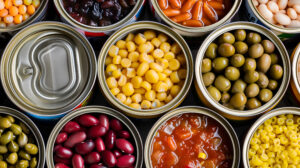Key Points:
- In today’s Recommendations for Industry, we discuss following the curve. Read more below.
- Extending TSA mask mandate ‘absolutely’ still on the table. On Monday, a top White House COVID-19 adviser said that extending the federal mask mandate for all transportation networks, which is set to expire April 18, is “absolutely” under consideration. Centers for Disease Control and Prevention Director Rochelle Walensky will make the decision on extending the mask mandate for transportation networks based on a scientific framework that the agency is developing. He also said that framework will be available in the “next few days.”
- Why a Coronavirus-Flu ‘Twindemic’ May Never Happen. Scientists are exploring a theory suggesting that exposure to one respiratory virus helps the body fend off competing pathogens. The idea is that exposure to one respiratory virus may put the body’s immune defenses on high alert, barring other intruders from gaining entry into the airways. This biological phenomenon, called viral interference, may cap the amount of respiratory virus circulating in a region at any given time. At an individual level, there may be some people who end up infected with two or even three viruses at the same time. But at a population level, according to this theory, one virus tends to edge out the others.
- COVID-19 led to unprecedented decline in global life expectancy. The COVID-19 pandemic reduced the world’s life expectancy by about 2 years, according to recent estimates published in Population and Development Review. Life expectancy declined from 2019 to 2020 and again from 2020 to 2021 but appeared to stabilize by the end of 2021, according to the findings. The analysis revealed that the increase in deaths during the pandemic had a substantial impact on global life expectancy, which had previously remained in uninterrupted growth from 1950 to 2019. The U.S. experienced an annual change of just over 2 years of decline, while other countries experienced greater declines.
- New COVID-19 symptoms may feel like the cold or flu. The UK Health Security Agency recently added COVID-19 symptoms to its list. Though they’ve been well known in the United States — they were not previously listed on the U.K.’s list of symptoms. Symptoms of COVID-19, flu and common respiratory infections include:
- continuous cough
- high temperature, fever, or chills
- loss of, or change in, your normal sense of taste or smell
- shortness of breath
- unexplained tiredness, lack of energy
- muscle aches or pains that are not due to exercise
- not wanting to eat or not feeling hungry
- headache that is unusual or longer lasting than usual
- sore throat, stuffy or runny nose
- diarrhea, feeling sick or being sick
- COVID Uptick (NYT). Recorded cases are up slightly, standing at about 6 percent of where they were during the peak of the Omicron wave in the Northeast. Hospitalizations are relatively low in most Northeastern states, and deaths are down. Both lag behind cases, typically by weeks. But some experts believe an increase in hospitalizations should have started showing up in at least some places, based on how previous waves played out. While advocating vaccines, treatments, public policy, and individual measures, like masking and social distancing, the article acknowledges that. But America may be looking at its first “so what?” wave — “a surge it cares to neither measure nor respond to.”
Influenza:
- CDC Key Updates for Week 13, ending April 2, 2022. Influenza activity increased nationally this week. Influenza activity is highest in the central and south-central regions of the country and is increasing in the northeastern regions. This week:
- 1.9% of visits to a health care provider are for respiratory illness (below baseline)
- 3 jurisdictions experienced moderate activity and 1 experienced high or very high activity
- The cumulative hospitalization rate was 8.0 per 100,000
- 2,965 patients were admitted to hospitals with influenza
- 7.5 % of deaths attributed to pneumonia, influenza, or COVID-19 (above threshold)
- 2 influenza-associated pediatric deaths reported (Total of 16 so far this season)
- Flu cases appearing later than usual, particularly in the Northeast where doctors are seeing an uptick of flu cases a little bit later than the norm.
Recommendations for Industry
COVID Levels – Follow the Curve
As TAG has been predicting, there has been a slight increase in COVID cases in the Northeast driven by the BA.2 subvariant. But we would emphasize that it is a slight relative increase that does not match the extremely high case rates seen in January and February of this year. In fact, even in Philadelphia, which is reinstating an indoor mask mandate, “the average number of daily new cases, currently at 142, is still nowhere near what it was at the beginning of the year, when the Omicron variant was pushing the seven-day average to nearly 4,000.” Mathematically, going from 5 to 10 cases per 100,000 represents a 100 percent increase in the case rate, but 10 daily cases per 100,000 represents a relatively low rate of community transmission. Case and hospitalization rates are good metrics to watch, not the percent increase in rates. We recommend that you “follow the curve” and watch for both increasing case rates and high levels of community transmission before considering shifts in mitigation strategies.
The UK began its latest surge the first week of March, increasing nearly daily until it reached its peak on March 22, with cases now significantly declined. In the past, the US had followed the trend of the UK about a month later, however the US data is not showing the beginning of the month increase that was seen in the UK, rather there continue to be slight nudges up and down, with none yet seeing even the high of early March. (Worldometer data)
Given all this, TAG recommends that businesses simply stay the course, with CDC community levels continuing to show a prominence of low “green” levels across much of the U.S.
In Case You Missed It:
- In last Thursday’s Recommendations for Industry, we discussed decreasing COVID cases and advice to maintain the course. Read more here.
- A recent Duke University study has found that US healthcare workers “had similar rates of potential moral injury – a type of trauma-induced wound to the psyche – as military combat veterans” leading to “significantly higher levels of depression and poorer quality of life” including “significantly greater” levels of burnout (CIDRAP).
- On Tuesday, President Biden “issued a presidential memorandum directing the secretary of Health and Human Services (HHS) to create a national action plan on long COVID” which would promote studying and funding research for between “7 to 23 million Americans who suffer from COVID-19 symptoms for months and years after initial infection.” In fact, “estimates suggest as many as 1 in 3 people with COVID-19 will develop symptoms” lasting longer than 4 weeks (CIDRAP).
- A study recently published in Nature better explains how the cytokine storms brought on by the SARS-CoV-2 virus that “shredded lungs” and created a “blizzard of immune reactions” in which “the case of the SARS-CoV-2 virus,” the virus is able to escape the front-line immune cells and continue its rampage (CNN).
- Yesterday, the FDA’s vaccination group “met to discuss the current science on fourth vaccine doses” (CIDRAP). Additionally, the European CDC has also begun discussions regarding a fourth mRNA vaccine (CIDRAP2).
- Overall global cases of COVID-19 have dropped, according to the WHO, despite BA.2 becoming dominant in all world regions. Many cases reported in China have been asymptomatic. In Taiwan, cases are also slowly rising as the island begins to reopen (CIDRAP).
Public Health:
- The Food and Agriculture Organization of the United Nations (FAO) discusses “Five things science tells us about food allergens” wherein “food labeling and Codex standards are keeping allergic consumers safe.” The five things include:
- “A food allergy is an abnormal immune response”
- “Some food allergies are worse than others” as evidenced through our “big-8”
- “The prevalence of food allergies differs by country” which is obviously influenced by diets and food consumption habits
- “Hygiene and laboratory tests can help limit and detect levels of allergens in foods” which highlights the importance of cleaning/sanitation programs as well as hygienic zoning
- And finally, “food labels and diligence protect allergic consumers” highlighting the importance of labeling beyond “may contain.”
- There is currently a multi-country outbreak linked to Kinder chocolate eggs (Reuters). Identified in over eight countries with 100 Salmonella infections, a high proportion of children have been hospitalized (FSN).
- As we discussed on Tuesday regarding oysters, the CDC now reports >90 individuals sick from raw oysters traced to Canada (FSN).
- States, including Georgia, Missouri, and Iowa, are beginning to consider “raw milk bills.” Some of these sponsored bills are to set “standards for raw milk to regulate the production, handling, transportation, and sale” (FSN).
- Recent observational research from the University of Lisbon in Portugal found, through fecal testing, that pets (dogs and cats) could share resistant bacteria with resistance genes with their owners (CIDRAP).





